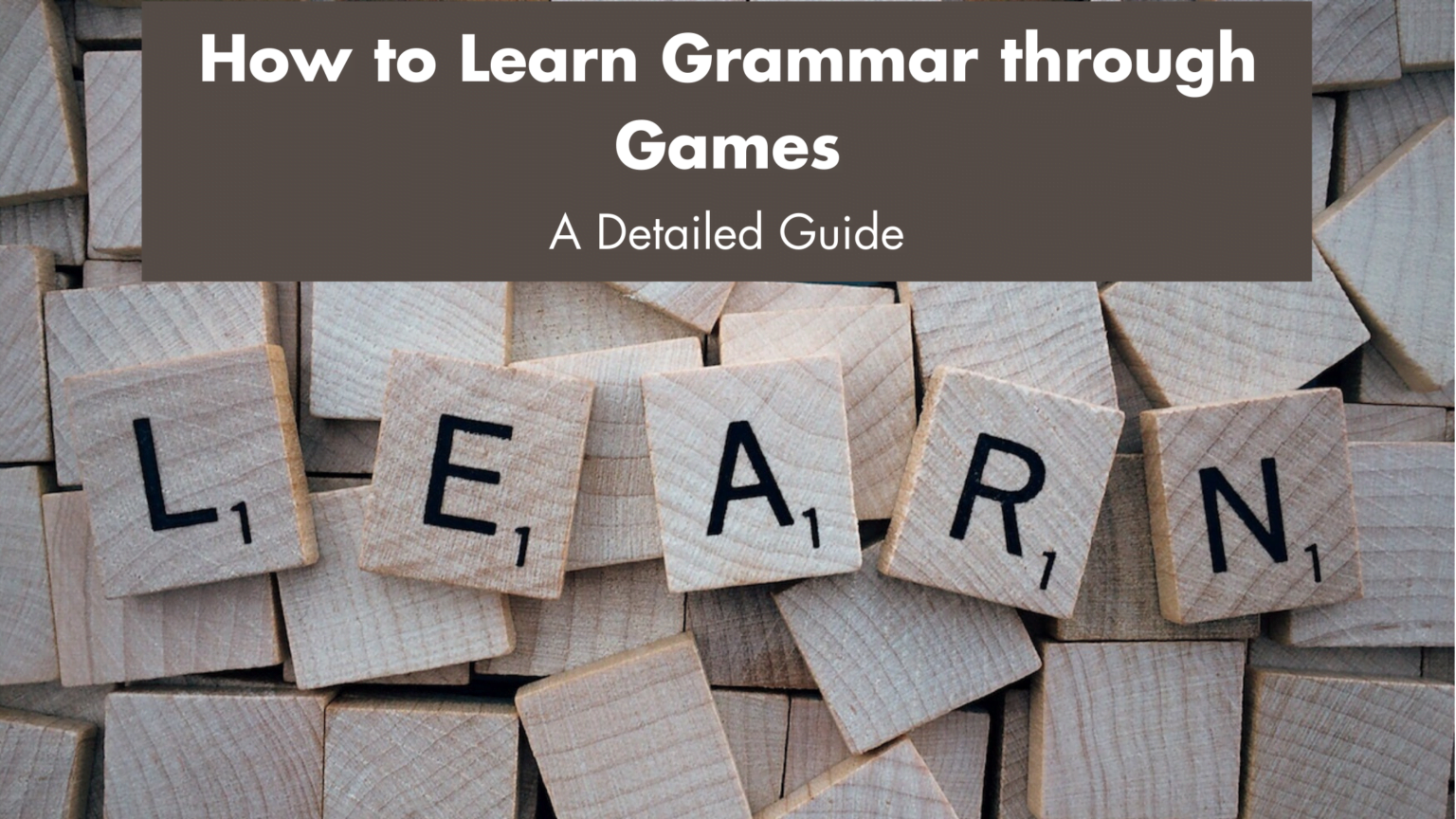Teaching Grammar through games – the idea of combining learning with fun might seem like something that only looks good on paper. However, many studies show that fun and healthy competition-based learning has actually shown better results in teaching students the basic concepts of language, mathematics, and science.
While some of the games in this list might seem quite simple to you – they actually draw upon a host of brain areas! Students will rely on their previous experiences, memorized rules, social skills, and reaction times to excel, making game strategy a fun yet effective learning method.
In this article, we’re going to delve into the why and then the how.
Why use games to teach kids English Grammar?
The use of games has been a long-held tradition in classrooms, especially when teaching younger kids. However, in recent years, its benefits have also been proven at all ages, especially when learning a new language.
Language is, first and foremost, a mode of communication. Combining this with a game environment effectively allows students to learn via involvement, exposure, and real-life scenarios. It introduces local vocabulary, quick thinking, and attentiveness to body language. Moreover, allowing them to use the language in real-time creates a connection between what they have learned in books to an actual situation before them.
Among young kids, the attention span ranges only from 8-24 minutes. This makes it harder to conduct classes related to grammar and phonetics – a lot of which rely on rote memorization.
Games, on the other hand, are a natural part of their day.
Game Strategy has been shown to:
- Decrease the anxiety that some children may face while learning a new language or being in a social setting especially for a bilingual child.
- Learners are increasingly motivated to prove themselves, and students have been seen to be more competent and try harder in game-based courses
- Increase positive feelings towards the learning environment and help with improving self-confidence
- As games are a positive reinforcement strategy, it removes the fear of punishment and criticism, allowing free practice
What kinds of games work best for teaching Grammar?
To make the most of the time with students, find a game with a defined outcome that teaches something specific. This can be nouns, adjectives, sentence structures or grammar. You can additionally also look for games that either focus on writing or listening skills.
Have an instructor explain the game via a demonstration. And make sure you introduce the game at the right stage! For example: do not play a Sentence game immediately after introducing clauses or compound sentences.
Game strategy can allow instructors to focus on the various corners of language learning, such as:
- Increasing their vocabulary
- Focusing on grammatical patterns
- Focusing on creating complete sentences explaining simple to complex actions and concepts
- Sharpening skills such as writing and reading
As well as improve various cognitive skills of the students, such as:
- Increased curiosity toward language learning via competitiveness
- Improving quick thinking skills in a non-stressful situation
- Increased participation in a social setting for all levels of learners
Usually, games that can be played in groups with more than one person active at a time are the best – especially if you’re dealing with large groups. If you have a twenty-student class but only have a single student engaging at any point in time, it can lead to the other zoning out.
Try to keep it fun, light, and competitive!
RELATED: How to learn English with movies
Teach grammar through games – Fun Games and How to Teach them
1. The Mystery Word Game
Teaches: Vocabulary
As the name suggests, the Mystery Word Game allows students to guess a mystery word. You can find mystery word cards online or create them yourself.
This only has one student who is the “instructor” for a particular round, while all the others can involve themselves in guessing – making it good for larger groups.
How to Teach:
- Distribute the cards among the students
- Ask one student to check their card and give a hint regarding the word on it. The hint can be related to whether the word is a noun, adjective, or the number of letters it has, and so on.
- The others try to guess what it means.
- Add further hints as needed.
- Repeat it with the next student.
You can also ask your students to create their own mystery words and write their own clues.
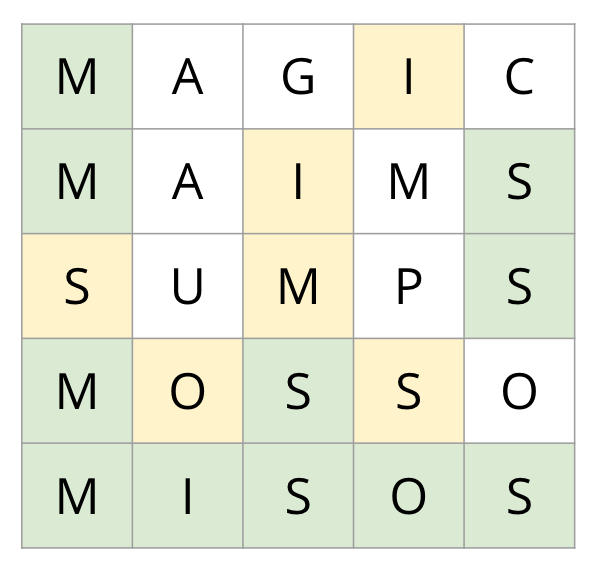
Source: Tekhnologic
2. Find Someone Who…
Teaches: social skills, sentence structure, grammar, memory
Remember when you first met your classmates? You came to know about their favorite cartoons, colors, games and what not.
Yeah you’ve guessed it right. We’ve turned it into a fun guessing game.
It is best played when the students of the class know each other to some extent and allows students to ask questions and answer them in full sentences.
How to Teach:
- The teacher will remain the “instructor” throughout the game. Ask a “Find someone who…” question and then add a characteristic. This can be someone’s hometown, hobby, favorite food, habit, or more. For example: Find someone who…lives in Region A, or Find someone who…is wearing a red shirt today.
- All students answering should do so in complete sentences.
- You can get more complex with the questions such as: “Find everyone who…likes pizza.” This will introduce collective nouns and conjugate verbs into the mix.
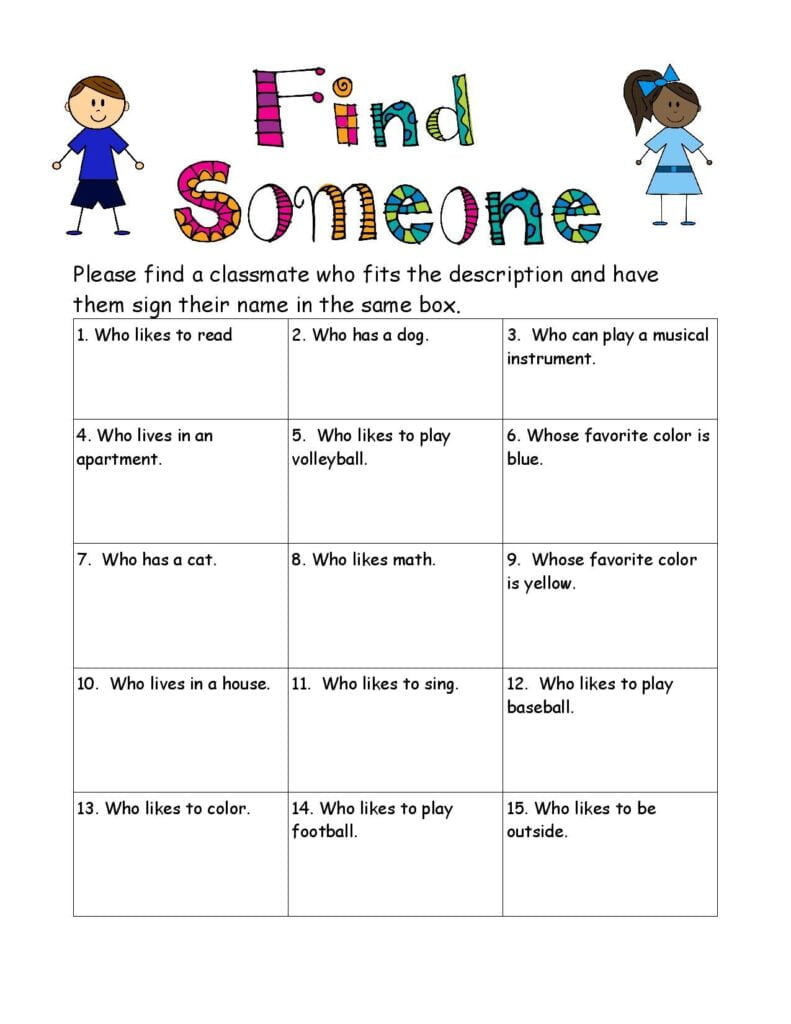
4. Word Scramble
Teaches: sentence structure, grammar
This is similar to Scrabble but with words. Or a game version of the textbook question, “Use these words to form a proper sentence.”
How to Teach:
- Create a long, complex sentence. Write each word on a card and hand it to the students
- Now allow them to form a sentence out of it and spell it out by standing in the correct order of the sentence.
- Repeat as needed!
This game introduces complex sentences in a fun way while also allowing kids to be physically active with their creative energy. Another harder variation is to distribute a few blank cards that can be anything. This can be used to change the tense or inflection of the sentence.
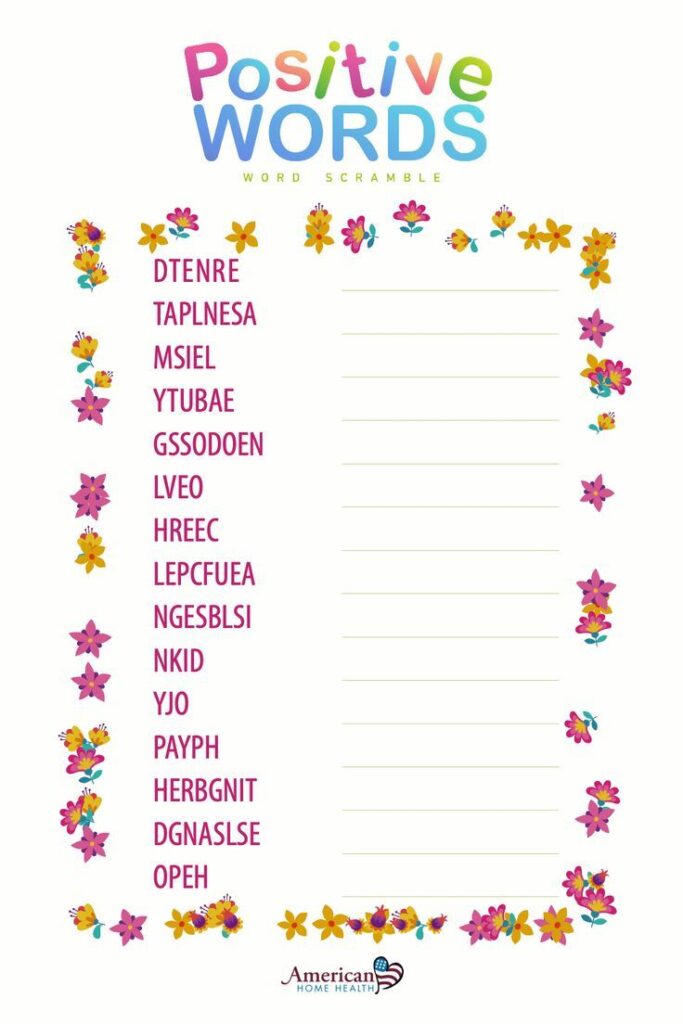
- Noun Scavenger Hunt (and its variations)
Teaches: grammar
Another active game that allows students to combine textbook learning with real-life scenarios. Here’s how you can play this:
- Describe a particular noun. Try to be vague so that it includes many things. For example: “A noun that starts with the letter A.” Now set a timer and ask the students to collect as many things from the room as they can, which is a noun satisfying those conditions.
- Allow the students to scramble around collecting the items. Keep the timer short enough to incite hurried multitasking.
- Evaluate the collected items.
Variations of this game can include worksheets that contain nouns and adjectives.
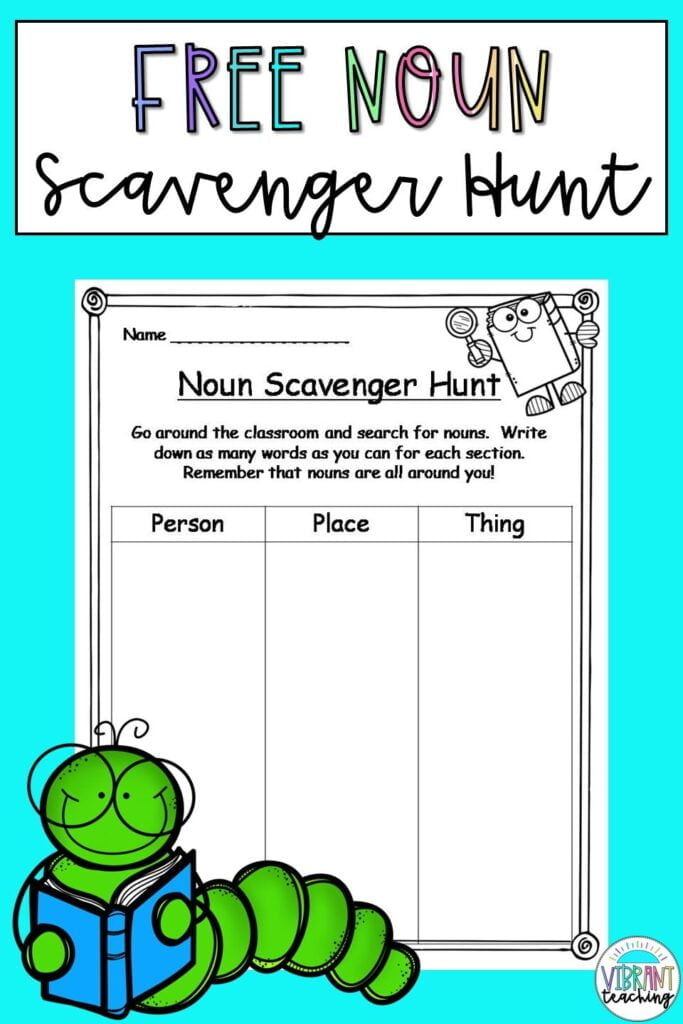
- Grammar Simon Says
Teaches: grammar
This variation of what Simon says allows students to differentiate between the different parts of speech. It is, in fact, a great game to teach them the abstract concepts of verbs, nouns, and later, metaphors, and more. Here’s how to play it :
- Set down the rules with various actions. They’re the same as that of “Simon Says” but multi-pronged. For example, if the word mentioned is a noun, clap your hands. If it’s a verb, stand up. If it’s an adjective, touch your head.
- Now list a string of words, allowing students enough time to decipher and react!
Grammar Simon Says is quick and reinforces group learning. You can make the game more competitive by eliminating students who do not perform the right action.
Conclusion
All said and done, games, too, need to be conducted within the attention span of the students. It’s best to conduct short rounds and stop at a high peak.
Not all subjects are suited for such alternative procedures. Grammar, by virtue of its own structure, lends well to the game format, and you should definitely exploit this similarity. If you do like these games (and see positive results), try to make up more of them to suit your syllabus. You can also try our Fun to Chat course that allows students to talk to other speakers with games, debates, and presentations in the mix.


